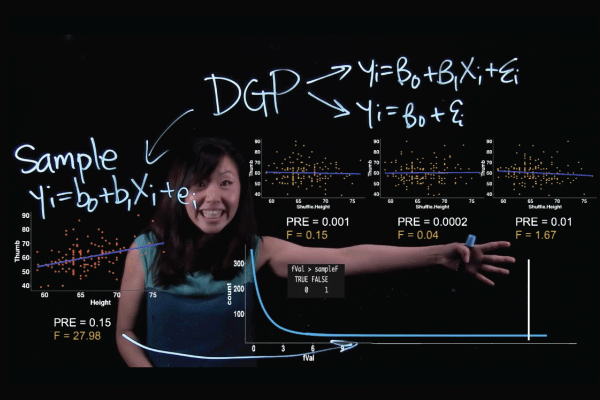First Person
Back Page: Building a Better Statistics Class

Ji Son, a professor of cognitive psychology at California State University, Los Angeles, brings the sum of her experience as a researcher and educator to uncovering data-based methods for helping students understand statistics more deeply.

How did you originally become interested in cognitive psychology and learning sciences?
Early on, I found that I learned things better by forcing myself to explain them to others. In college, I went to the math tutoring office all the time to get tutoring and explain things back to other students. I also had a variety of tutoring jobs where I came up with little ideas on how to teach more effectively (A diagram! A table! An analogy!). But I wondered—how would I know whether a little idea really was an improvement? So I started doing research in cognitive psychology with the basic belief that if I knew how the mind was structured, then I could “feed” the mind information more effectively.
What are some common misconceptions about teaching statistics or teaching in general, and what does your research have to say about them?
The biggest misconception is that we can actually know when someone has learned something! We can measure how well students did on some question, test, or course, but are these good measures of understanding? Take the example of division in K-12 education. Over time, students learn how to divide integers, fractions, decimals, and even polynomials. Given that students know how to divide in so many situations, one might assume that they know what it means to divide. But many U.S. college students conceptualize division in a limited way as “making smaller” or “breaking into pieces” and cannot explain why 5/6 ÷ 1/3 = 2 1/2 has an answer “larger” than both of the numbers involved in the division (Geller, Son, & Stigler, 2017). This may not be surprising, given Li Ping Ma’s finding (1999) that almost all of the American elementary school teachers in her study could not even imagine a story situation that would go with such an expression. This should give us all pause… How do we know if someone understands division?
You also apply your research through helping professors and educational institutions implement science-based teaching techniques. What are some of the most common hurdles to overcome in this setting?
Learning research seems so clean and straightforward when we read about it in a published article. But in the real world of teaching multiple classes, with adjunct professors getting handed a syllabus 1 week before class, and COVID-19 shifting all universities into remote instruction, things are a lot messier. Most research is univariate (for good reason!), while teaching and learning is multivariate. My goal is to creatively overcome this hurdle by building our capacity to conduct research that, by design, fits well into this complex system.
For example, in our “Better Book” project (Stigler et al., in press), our team has developed a free interactive online statistics textbook (coursekata.org) that continuously improves based on learning data. The experimental solutions are attempts to address real issues identified by students and instructors. Live experiments with students are conducted in the textbook, and any innovations that arise from the research are then directly implemented in the freely available learning materials so that data-based innovations can be easily accessed. Ultimately, we hope to build a better way for instructors and students to benefit from research.

What is the most challenging part of teaching statistics? The most rewarding?
Teaching students hard things and seeing students learn hard things. It’s incredibly difficult to grapple with concepts that take days, weeks, months to learn. There are days when students feel like they “get it” immediately followed by a day of despondent confusion. But that’s what the process of learning something hard actually feels like. There’s also a real satisfaction from that kind of complex learning. It’s like watching someone give birth! Pain and joy so close to each other!





APS regularly opens certain online articles for discussion on our website. Effective February 2021, you must be a logged-in APS member to post comments. By posting a comment, you agree to our Community Guidelines and the display of your profile information, including your name and affiliation. Any opinions, findings, conclusions, or recommendations present in article comments are those of the writers and do not necessarily reflect the views of APS or the article’s author. For more information, please see our Community Guidelines.
Please login with your APS account to comment.